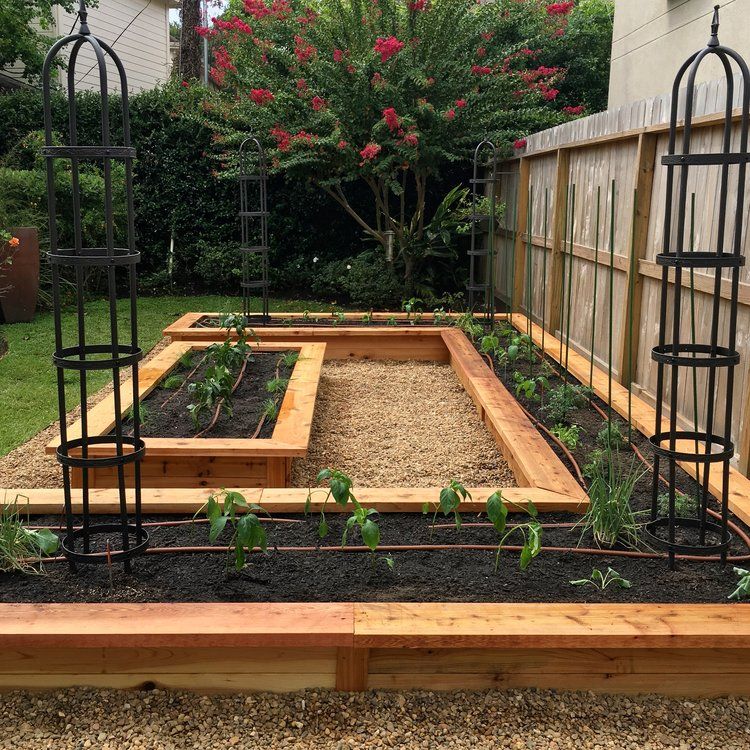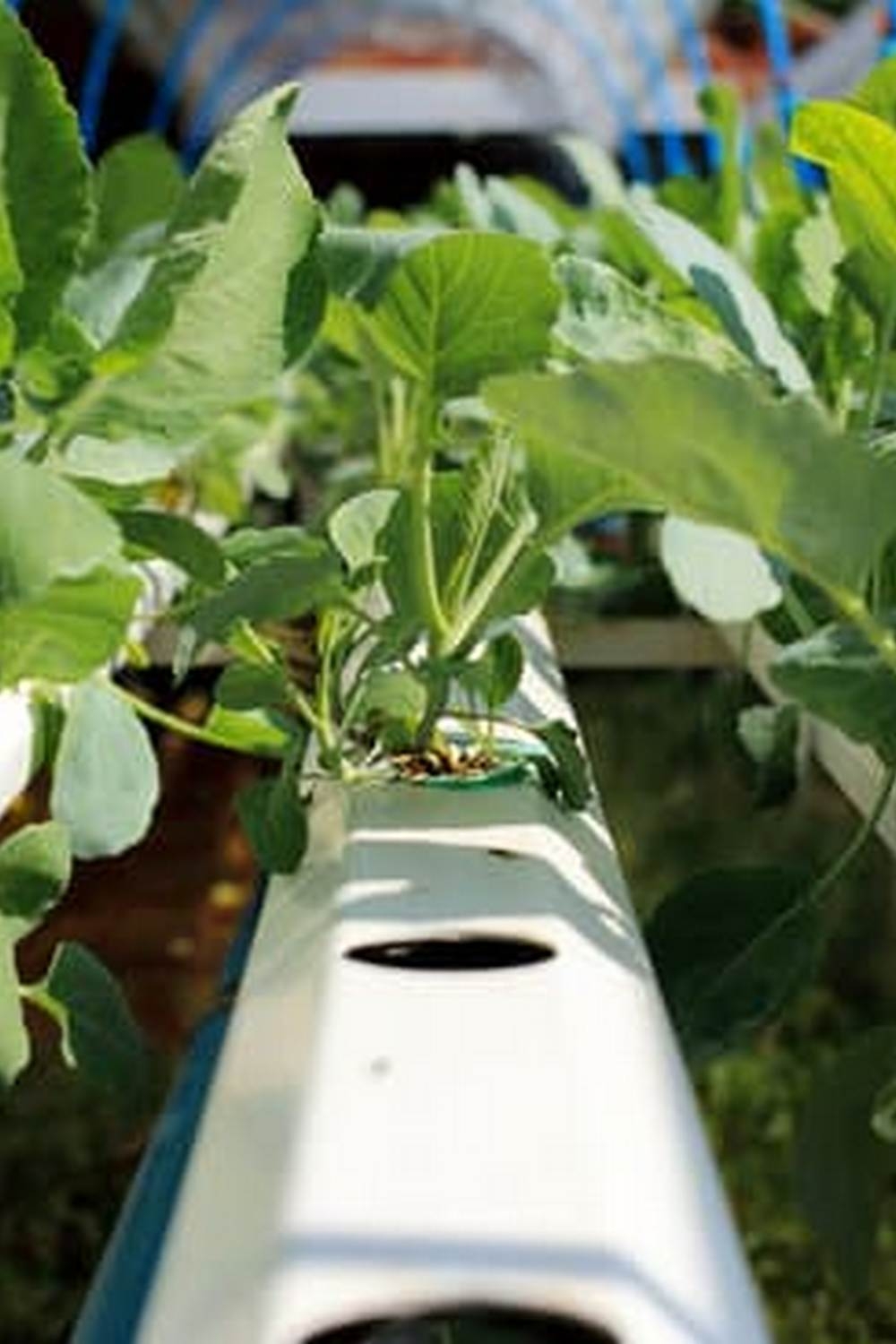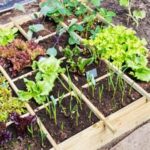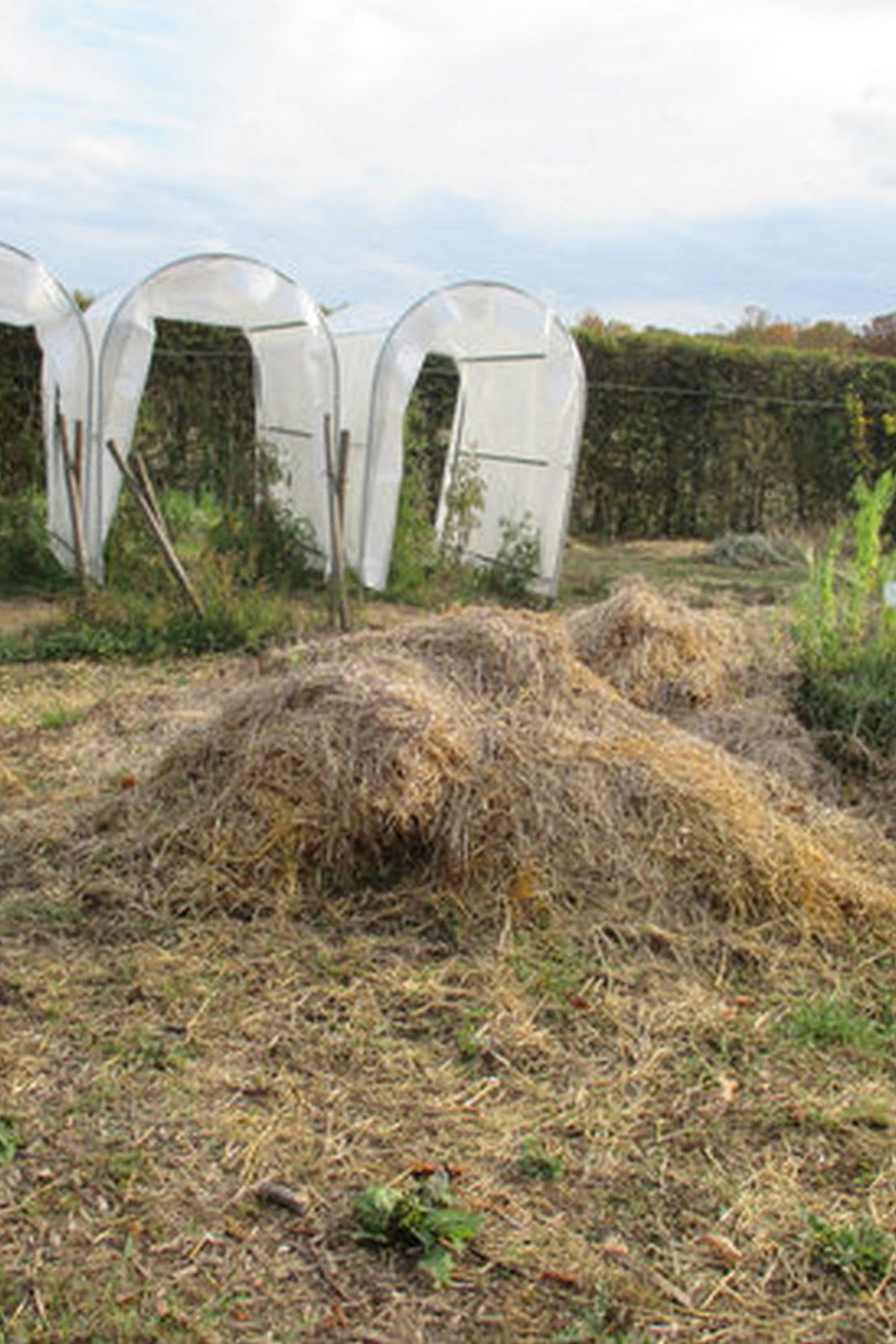Are you interested in starting a vegetable garden in Ohio? Whether you’re a seasoned gardener or a beginner, there’s a thriving world of vegetable gardening waiting to be explored in the Buckeye State. From understanding the unique climate and soil conditions to discovering the best vegetables to grow, there are endless opportunities for success in vegetable gardening in Ohio.
Ohio’s diverse climate and soil conditions present both challenges and opportunities for vegetable gardening enthusiasts. With the right knowledge and strategies, you can maximize your garden’s potential and yield a bountiful harvest. In this article, we will delve into the key factors that contribute to successful vegetable gardening in Ohio, providing you with valuable insights and tips for navigating this unique growing environment.
From tomatoes to peppers, Ohio offers an ideal environment for cultivating a wide variety of vegetables. Whether you have limited space in your backyard or ample room for a large garden, there are countless options to suit your preferences and needs. We will guide you through the best vegetables to grow in Ohio, helping you choose the perfect crops for your garden and providing expert advice on how to care for them throughout the growing season.
Climate and Soil Conditions
Ohio’s climate and soil conditions present unique challenges for vegetable gardening. With its humid continental climate and diverse soil types, Ohio gardeners must carefully consider the best methods for cultivating a successful vegetable garden. The state experiences cold winters and hot, humid summers, which can impact the growth of various crops. Additionally, Ohio’s soil varies from sandy to clay-like, requiring different approaches to ensure optimal plant growth.
When it comes to vegetable gardening in Ohio, it’s essential to choose crops that are well-suited to the state’s climate and soil conditions. Some of the best vegetables to grow in Ohio include tomatoes, peppers, cucumbers, green beans, and lettuce. These crops are known for thriving in Ohio’s environment and can be rewarding for gardeners to cultivate.
To navigate Ohio’s unique growing environment successfully, there are several strategies that vegetable gardeners can employ. Raised bed gardening can provide better drainage in areas with heavy clay soil, while mulching can help retain moisture in sandy soil. Additionally, utilizing season extenders such as cold frames or row covers can help protect plants from extreme temperatures during both the summer and winter months.
Overall, understanding the specific challenges posed by Ohio’s climate and soil conditions is crucial for aspiring vegetable gardeners in the state. By selecting appropriate crops and implementing tailored cultivation techniques, individuals can maximize their success in vegetable gardening in Ohio.
| Challenges | Strategies |
|---|---|
| Cold winters | Utilizing season extenders like cold frames or row covers |
| Diverse soil types | Raised bed gardening for better drainage; Mulching for moisture retention |
| Hot, humid summers | Selecting heat-tolerant varieties; Appropriate watering schedule |
Best Vegetables to Grow in Ohio
When it comes to vegetable gardening in Ohio, it’s important to choose the right crops that are well-suited to the state’s climate and soil conditions. Luckily, Ohio’s diverse growing environment makes it ideal for a wide variety of vegetables. Whether you have a small backyard garden or several acres of land, there are plenty of options to choose from. Here are some of the best vegetables to consider planting in your Ohio garden:
- Tomatoes: This versatile crop thrives in Ohio’s warm summers and can be grown in containers or directly in the ground. From cherry tomatoes to beefsteak varieties, there are countless options to choose from.
- Peppers: Bell peppers, jalapenos, and other pepper varieties do well in Ohio’s temperate climate. They require full sun and well-drained soil, making them a great addition to any garden.
- Zucchini: A prolific and easy-to-grow vegetable, zucchini is a popular choice for Ohio gardeners. It does well in fertile soil and warmer temperatures.
In addition to these popular options, Ohio gardeners also have success with cucumbers, green beans, sweet corn, and various leafy greens like lettuce and spinach. When selecting your vegetable crops, it’s essential to consider factors such as sunlight requirements, planting depth, and spacing between plants.
Tips for Planning and Planting
Once you have decided on the vegetables you want to grow in your Ohio garden, it’s time to plan and plant with care. Here are some essential tips for maximizing your vegetable garden’s potential:
- Choose the Right Location: Select a sunny spot with well-drained soil for your vegetable garden.
- Start with Quality Seeds or Seedlings: Invest in high-quality seeds or healthy seedlings from a reputable source for optimal results.
- Follow Spacing Guidelines: Pay attention to recommended spacing between plants when sowing seeds or transplanting seedlings.
By following these planning and planting tips, you can set yourself up for success as you embark on your vegetable gardening journey in Ohio. With careful consideration of your chosen crops’ needs and thoughtful execution of planting strategies, you’ll be on your way to a bountiful harvest.
Tips for Planning and Planting
When it comes to vegetable gardening in Ohio, strategic planning and planting are key to maximizing your garden’s potential. There are several tips and strategies that can help ensure a successful and bountiful harvest.
One important tip for planning and planting your vegetable garden in Ohio is to carefully consider the layout of your garden. Take into account factors such as sunlight exposure, wind patterns, and water availability when deciding where to plant each type of vegetable. This thoughtful approach will help optimize the growing conditions for each crop.
Another strategy for success in Ohio vegetable gardening is to rotate your crops. This means planting different types of vegetables in different areas of the garden each year, rather than planting the same vegetables in the same spots every season. Rotating crops helps prevent soil depletion and reduces the risk of disease and pest infestations.
Additionally, it’s crucial to pay attention to proper spacing when planting your vegetables. Overcrowding can lead to competition for nutrients and water, resulting in stunted growth and lower yields. Be sure to follow spacing recommendations for each type of vegetable you plan to grow.
These tips and strategies for planning and planting a vegetable garden in Ohio are essential for ensuring a successful growing season. By carefully considering the layout of your garden, rotating your crops, and paying attention to proper spacing, you can maximize the potential of your vegetable garden and enjoy a plentiful harvest.
| Tips for Planning and Planting | Strategies for Success |
|---|---|
| Carefully consider layout, sunlight exposure, wind patterns, water availability | Optimize growing conditions for each crop |
| Rotate crops annually | Prevent soil depletion, reduce risk of disease |
| Pay attention to proper spacing | Avoid competition for nutrients and water |
Maintenance and Care
Maintaining your vegetable garden in Ohio involves diligent care and attention to ensure the health and productivity of your crops. Proper watering, pruning, and pest management are essential practices for nurturing a thriving garden in Ohio’s unique climate and soil conditions.
Watering
Ohio’s climate can vary greatly, with hot and dry summers that pose a challenge for keeping your vegetables adequately hydrated. It’s crucial to water your garden consistently, ensuring that the soil remains moist but not waterlogged. Utilizing soaker hoses or drip irrigation systems can help deliver water directly to the roots while minimizing evaporation. Consider incorporating mulch to help retain moisture and reduce the frequency of watering.
Pruning
Regular pruning is essential for maintaining the health and productivity of your vegetable plants. Removing dead or diseased foliage encourages new growth and prevents the spread of diseases. Additionally, pruning helps improve air circulation around plants, reducing the risk of fungal infections. Be sure to use clean and sharp tools when pruning to minimize damage to the plants.
Pest Management
Ohio’s diverse ecosystem makes it susceptible to various pests that can threaten your vegetable garden. Implementing integrated pest management (IPM) strategies is essential for controlling pests while minimizing harm to beneficial insects and the environment. This may include using physical barriers, natural predators, and organic pesticides when necessary. Regularly inspect your plants for signs of pest damage, such as holes in leaves or chewed fruits, and take appropriate action to address any infestations.
By mastering these essential maintenance and care practices for vegetable gardening in Ohio, you can cultivate a bountiful harvest while promoting the overall health and sustainability of your garden.
Seasonal Planting Calendar
Ohio’s diverse climate and soil conditions present unique challenges for vegetable gardening. However, with careful planning and strategic planting, Ohio gardeners can take advantage of the changing seasons to maximize their harvest.
Spring Planting
In Ohio, spring is the ideal time to plant cold-hardy vegetables such as lettuce, spinach, peas, and radishes. These crops can tolerate cooler temperatures and provide an early harvest before the heat of summer sets in. It is also important to keep an eye on the last frost date in your area before planting warm-season vegetables such as tomatoes, peppers, and cucumbers.
Summer Planting
During the summer months, Ohio gardeners can enjoy a bountiful harvest of warm-season vegetables. Popular options for summer planting include tomatoes, peppers, squash, eggplant, and beans. It is essential to provide consistent watering during this time to ensure that plants thrive in the hot and humid conditions of Ohio’s summers.
Fall Planting
As the temperatures begin to cool in Ohio, fall presents another opportunity for vegetable gardening. Cool-season crops like kale, broccoli, carrots, and beets can be planted for a late-season harvest. Additionally, garlic can be planted in the fall for a harvest the following summer.
By following a seasonal planting calendar tailored to Ohio’s climate and soil conditions, gardeners can ensure a successful vegetable gardening experience throughout the year. Understanding when to plant specific crops based on Ohio’s changing seasons is key to reaping a plentiful bounty from your garden.
Community Resources and Organizations
Ohio’s vegetable gardening community is a thriving and supportive network of enthusiasts and experts, providing a wealth of resources and knowledge for those looking to cultivate their own bountiful gardens. Whether you’re a seasoned gardener or just starting out, connecting with fellow gardeners and seeking expert advice can greatly enhance your vegetable gardening experience in Ohio.
Community resources and organizations play a crucial role in the success of vegetable gardening in Ohio. By joining local gardening clubs, attending workshops, or participating in community gardens, individuals have the opportunity to learn from experienced gardeners, exchange tips and tricks, and gain valuable insights into Ohio’s unique climate and soil conditions. Engaging with like-minded individuals also fosters a sense of camaraderie and support that can be instrumental in overcoming challenges and celebrating successes.
Here are some ways aspiring vegetable gardeners can connect with the community:
- Join local gardening clubs or associations
- Attend workshops or seminars on vegetable gardening in Ohio
- Participate in community gardens
- Volunteer at botanical gardens or agricultural extension offices
- Connect with fellow gardeners through online forums or social media groups
By tapping into these community resources and organizations, individuals can not only expand their knowledge of vegetable gardening in Ohio but also form meaningful connections with others who share their passion for cultivating fresh produce. This collaborative approach provides an invaluable support system for both novice and experienced gardeners alike.
Sustainable Practices
When it comes to vegetable gardening in Ohio, embracing sustainable practices is not only beneficial for the environment but can also lead to a more successful and fulfilling gardening experience. By implementing eco-friendly methods and techniques, Ohio gardeners can contribute to the preservation of the state’s natural resources while yielding bountiful harvests year after year.
One of the first steps towards sustainable vegetable gardening in Ohio is to focus on soil health. Utilizing organic compost, cover crops, and natural fertilizers can help improve soil structure, promote healthy microbial activity, and enhance nutrient availability for growing vegetables. Additionally, practicing crop rotation can prevent soil depletion and minimize the risk of pest and disease problems, ultimately leading to a more resilient and sustainable garden ecosystem.
Incorporating water conservation strategies is another crucial aspect of sustainable vegetable gardening in Ohio. With the unpredictability of rainfall in the state, utilizing techniques such as mulching, drip irrigation systems, and rainwater harvesting can help conserve water while ensuring that vegetable plants receive adequate hydration. By reducing water usage and promoting efficient irrigation practices, Ohio gardeners can contribute to the preservation of precious freshwater resources within the state.
Conclusion
In conclusion, vegetable gardening in Ohio offers a rewarding and fruitful journey for all individuals who are eager to embrace the challenge of growing their own produce. With a deep understanding of the unique climate and soil conditions in Ohio, gardeners can choose from a diverse range of vegetables that thrive in this environment. From tomatoes to peppers, Ohio provides an ideal setting for cultivating a bountiful harvest.
Aspiring gardeners must carefully plan and strategize their planting efforts, ensuring that they maximize their gardens’ potential amidst the changing seasons. Maintenance and care are essential components in nurturing a thriving vegetable garden, from watering and pruning to managing pests effectively. By embracing sustainable practices, such as composting and eco-friendly techniques, individuals can contribute to a greener future while reaping the benefits of their labor.
Furthermore, Ohio boasts an abundance of community resources and organizations that offer support and expert advice to both novice and experienced vegetable gardeners. Connecting with fellow gardening enthusiasts can provide valuable insights and foster a sense of camaraderie within the local gardening community.
With all these elements in place, I encourage my fellow Ohioans to embark on their own vegetable gardening journeys, embracing the fulfilling experience of growing their own fresh produce right in their backyard. Vegetable gardening in Ohio offers endless possibilities for growth and discovery, making it an enriching venture for all who dare to take part in it.
Frequently Asked Questions
When Should I Start My Vegetable Garden in Ohio?
You should start your vegetable garden in Ohio in early spring, typically around late April or early May. This timing allows the soil to warm up and reduces the risk of frost damage to your plants.
What Vegetables Are Good to Grow in Ohio?
There are several vegetables that are good to grow in Ohio’s climate. Some popular options include tomatoes, peppers, cucumbers, zucchinis, green beans, lettuce, spinach, carrots, and radishes. These vegetables tend to thrive in Ohio’s growing conditions.
What Month Should I Plant My Vegetable Garden?
The ideal month to plant your vegetable garden in Ohio is May. By this time, the risk of frost is minimal and the soil has had a chance to warm up sufficiently for planting. However, specific planting times may vary depending on the type of vegetable you are planning to grow.

If you’re looking to get into vegetable gardening, or are just looking for some tips on how to make your current garden better, then you’ve come to the right place! My name is Ethel and I have been gardening for years. In this blog, I’m going to share with you some of my best tips on how to create a successful vegetable garden.





